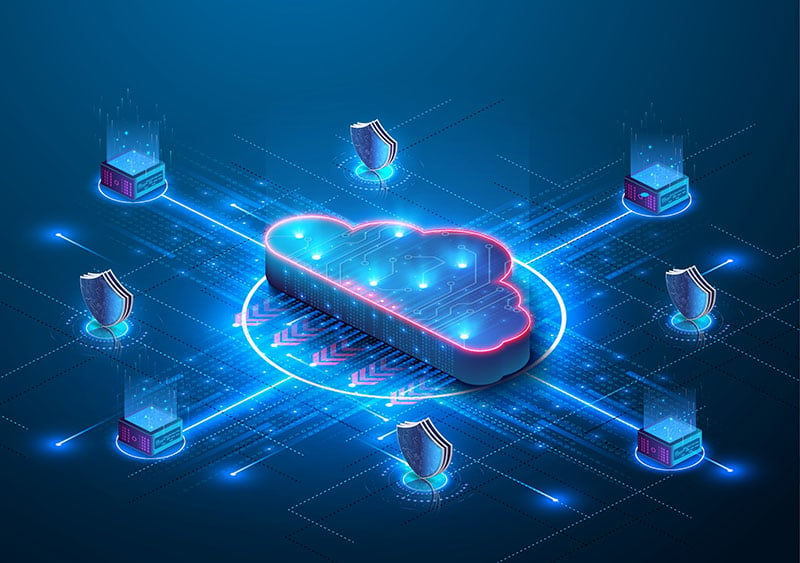
IBM Power In The Cloud: More Than A Hardware Lift And Shift
In my role, I speak with several companies each week about the prospect of migrating from their on-premise IBM Power server to our IBM Power Cloud. A common thread that runs through these conversations is a focus on the cost of purchasing and maintaining an on-premise server versus the monthly recurring fee of our cloud based service. Many prospects see this move as a simple lift and shift to cloud infrastructure rather than a modernization strategy.
And while this may be partially true, as most customers are not modernizing their application when migrating, they are overlooking the modernization benefits that the cloud offers to their overall IT strategy. This article will take look at additional benefits that should be considered when contemplating a cloud migration.
Environment: Are you doing the best you can with what you have?
If building a secure, reliable resilient datacenter was cheap, everyone would have one, right? The reality is it isn’t, and companies are simply doing their best with the facility they have and what their budget will support. In most cases we find that companies are getting by with what they have but they know the situation isn’t optimal and they cross their fingers hoping that their good fortune will continue.
When you contract with a reputable cloud service provider, you will benefit from built for purpose facility that has all the infrastructure, systems and process in place to make sure that in the event of a failure, the datacenter and your IT infrastructure, is always up and running. The accomplish this through an architecture that is built with diversity, redundancy and self-healing in mind. In addition to the design, there are also certifications, audits, rigorous maintenance schedules and tests that are performed to guarantee that everything will perform as expected, when needed.
Backups: Are They Critical But Critically Lacking?
I’ve yet to talk to anyone that says they aren’t doing backups or that they don’t think backups are important but when we start peeling back the layers of the onion, we find that few companies are doing a good job at backups. All too often, when we start exploring data backup processes, we find a scenario similar to the following example:
A local manufacturer wanted to talk about IBM Power in the cloud and kicked off our meeting with a short tour of the “datacenter.” When asked about their backups, they pointed to table across the room from their IBM i. On that table were two consumer grade “fireproof” boxes, not designed for protecting digital media, and he explained that they rotated boxes each week so that they always had two weeks of backup data. The lid to both boxes was open and neither box ever left the room. All their IT infrastructure and data resided in that 12×12 room with the water-stained ceiling. When asked about the frequency of performing a full system save, the newly minted admin admitted that he did not know what that meant.
When your IBM Power system is in the cloud, you gain access to backup services that typically far exceed what you are doing onsite. Some companies will bundle these backup services into the standard price of the offering while others will make backups an optional add-on. For customers that choose to have their IBM i hosted in our datacenter, they end up with four copies of their data, two of which are at an offsite location. These backups position the customer for both a lower recovery point and a lower recovery time. In the event of a ransomware attack, hardware failure or disaster having a solid backup and recovery process in place will be the difference in how long it takes to get your business back up and running.
Disaster Recovery: Have You Thought Through All The Scenarios?
With the backup picture so murky, you may be thinking that disaster recovery (DR) is even worse, and you are right. If you think having a solid backup strategy is expensive, try developing a DR strategy that delivers an acceptable Recovery Point Objectives (RPO) and Recovery Time Objectives (RTO) for the various DR scenarios that exist. Depending on the age of your Power server, simply paying for maintenance and support can be very costly. Here is a recent scenario we ran into where that expensive maintenance and support plan didn’t pay off:
When a local bakery, operating on a POWER7, had a hardware failure they quickly called out to their vendor for support. The vendor went to work locating replacement parts but after waiting for several days, with no guaranteed delivery date, the bakery made the decision to abandon the repair and migrate to the cloud. Within days, their business was back online.
That was a simple hardware failure recovery gone wrong versus something much bigger like the loss of a building or entire campus.
With your IBM i in the cloud, the door is wide open to various DR solutions. If a fast recovery is necessary, a cloud services provider can offer high availability (HA) solutions in which recovery time is less than 60 minutes. For those that can tolerate a longer recovery time, reserved infrastructure will guarantee them the availability of resources. And for those that simply don’t have it in their budget to purchase guaranteed DR, many cloud service providers will provide a “best efforts” lever of DR that is contingent upon available resources.
Resources: Are You Paying For More Than You Need?
How many of you have purchased an IBM Power system and paid for more resources than you need? We see it all the time — companies that are paying for a full processor, a minimum configuration of memory and a terabyte of storage only to be using a fraction of those resources. This is buying on the vendors terms, not based on your needs.
With a cloud solution, you can purchase and pay for only what you need. We are consistently migrating customers off boxes that have a full CPU licensed to a cloud server where we allocate them a fraction of a processor. We configure their storage with the room they need today and grow that resource as they need it. Their memory can be configured and then adjusted throughout the year based on demand. With the cloud, there is simply no reason to purchase resources that will never be utilized.
Performance: Does Latency Across The Wide Area Concern You?
I often hear prospects express concerns about how their application will perform over the wide area. They worry that having their server hundreds of miles from the end users will impact their ability to perform their jobs. The pandemic has helped resolve those concerns for some companies. When workers were sent home to work remotely, IT teams discovered that their applications running on the IBM i actually performed quite well. This has help alleviate one major concern associated with the cloud and got people looking.
We have end users connecting to LPARs in our datacenter from all over the world and we have never had a customer report a performance degradation. In fact, many customers have indicated that are seeing faster performance. We attribute this to the fact that we don’t leverage storage on the server but instead utilize an external SAN that is fiber connected. This results in faster I/O, less time for backups and faster recovery.
Is It Time For IBM Power In The Cloud?
A cloud migration is about much more than just getting out of the hardware purchase and maintenance business — it’s about upping your overall IT strategy, improving performance and protecting your business from the unexpected. So, the next time the IBM Power in the cloud conversation comes up, think beyond the hardware. Think about all the benefits a migration will provide your business.
Learn More
If you would like to explore the wide range of benefits that come with migrating to a cloud based solution, check out our IBM Power Solutions on the web, see some of our client success stories or contact us to schedule a call.
